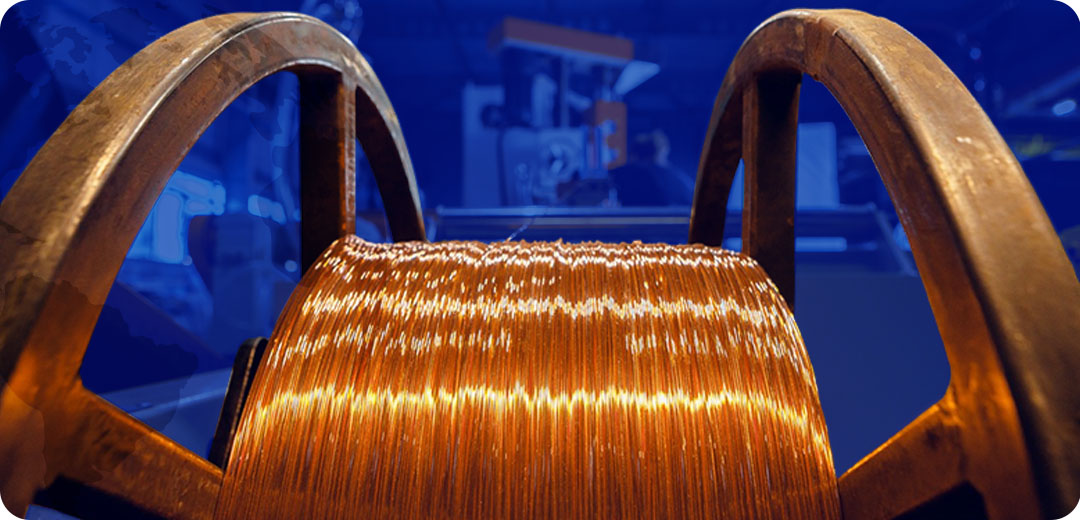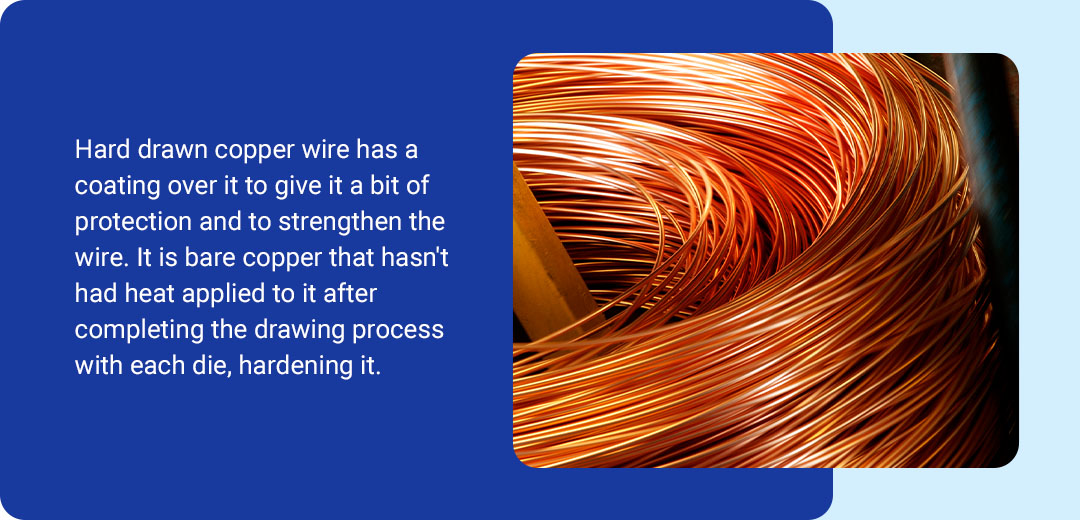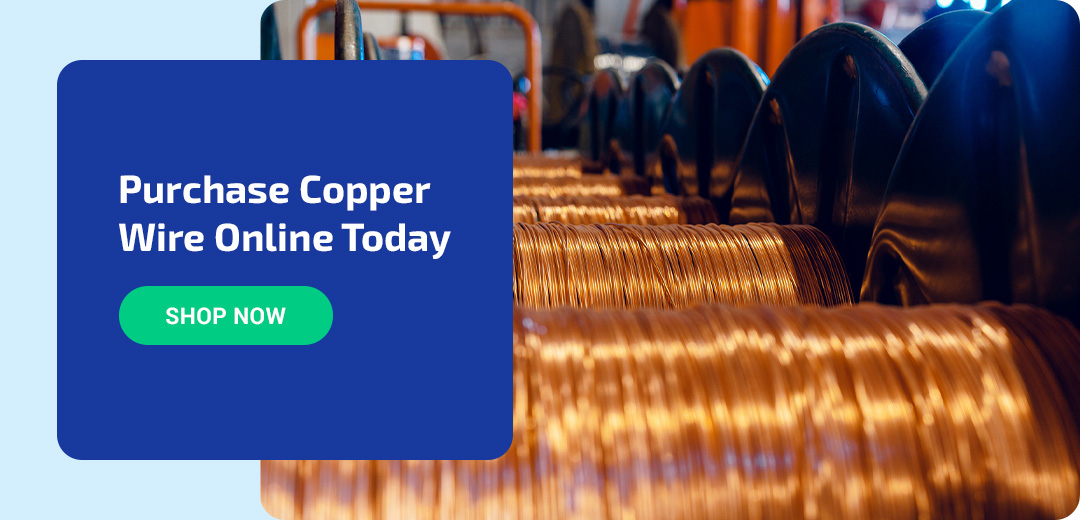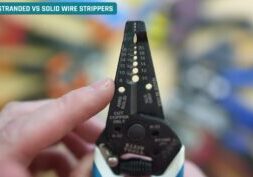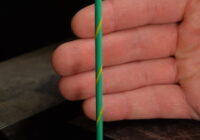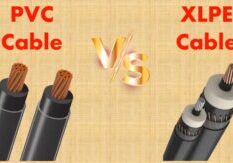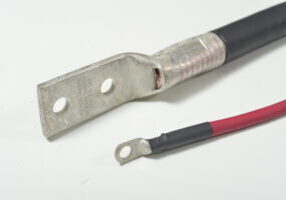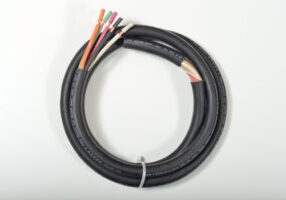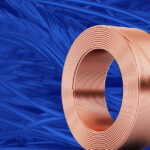
Jan 5, 2021
Bare Copper Wire & Types
We use electrical energy every day—it runs businesses and homes and powers our everyday tasks. Since its discovery, people have been inventing and developing different types of cables and wires to transmit power effectively to the devices that light up our houses and power our industries.
One such wire is copper wire, available in bare and tinned varieties for use in commercial, industrial and residential applications. Bare copper wire is an important component in many different types of electrical cables — you can find solid, or bare, copper wire in everything from overhead communication wiring to the many components in large, multiconductor cables. Copper wires come in a variety of configurations and offer several beneficial characteristics for electrical transmission.
Bare copper wire is a versatile material used in various applications due to its excellent conductivity and durability. In this article, we will explore the three main types of bare copper wire: soft drawn, hard drawn, and stranded.
What Is Solid Bare Copper Wire?
Solid copper is an uninsulated copper wire used for grounding. Aside from silver, it offers some of the best electrical and thermal conductivity available, but it doesn’t provide much insulation and durability. In addition to grounding applications, you may also find it used where there aren’t many hazards to deal with, such as residential wiring. In these places, it is usually tucked safely within conduits and away from harsh environmental conditions.
Copper is known for resisting corrosion, especially when treated with tin. It also works well in high temperatures and during climate changes. One significant benefit of bare copper wire is its flexibility. This material can bend and twist easily, making it great for tight spots and within larger cables.
Bare copper wire is sometimes annealed, which applies a heat treatment to improve how well the copper stands up to extensive flexing. Annealed bare copper wire tends to be the most flexible.
We carry American Wire Gauge (AWG) sizes 26-2 to fit numerous applications. Solid copper #8 is the most popular AWG size used based on the volume of electrical wire sold by WesBell Electronics.
We have 100′, 500′ and 1000′ bare copper wire spools available for purchase online. You can also call our customer service representatives if you need something in between or a higher quantity for bulk bare copper wire pricing. We offer free shipping on all of our electrical wire and cable on orders over $500 so that you don’t have to worry about figuring out the best shipping rate.
While copper wire isn’t reviewed by popular organizations like The CSA Group and Underwriters Laboratories (UL), the National Electrical Code (NEC) does dictate much of its use, and you can find federal approval through military specification AA59551.
AA59551 Mil-Spec Approved Bare Copper Wire
Our bare copper electrical wire has a military approval code of AA59551 on every size gauge available. This specification covers a wide range of copper conductors for electrical wires, including solid, bunch-stranded, rope-lay-stranded, concentric-lay-stranded, round, and uninsulated wire.
Mil-spec approved wires are one of the toughest kinds of wires that you could use for your electrical connections. The word “mil-spec” stands for “military specifications approved,” which means that this type of wire is what the military uses for high-end computer connections and other military equipment. The most common material that is used for this type of wire is copper.
A mil-spec approved AA59551 wire is a class of copper wire used for two main purposes. It can function as a ground wire for electrical cables and as the cable connecting ground wires. Bare copper wires are advantageous as electrical or ground wires due to their lack of insulation. Thanks to a generous range of 26 AWG to 2 AWG, you can also find bare copper wire sizes for almost any application.
AA59551 mil-spec approved wires can be solid or stranded. Because of higher demand, manufacturers generally produce much more solid bare copper wires than the stranded version. This means that if you need the stranded version of solid bare copper wires, you may need to call or e-mail the manufacturers first to get a quote.
Solid bare copper wires with mil-spec approval are also used as an additional conductor for cable wires, such as in MC cables. The solid bare copper wire, as a ground wire, will usually be damaged first when moisture, gas, oil and other solvents hit the cable, so if you are going to make wires yourself, it would be good to add a strand of bare copper wire to protect the other materials.
Wires approved for AA59551 can also include a helpful tin coating, which retains copper wire’s conductive and non-insulating properties. In grounding applications, tinned copper wires serve a similar purpose to bare copper wire, except that they make the soldering process much easier. This is because the soldering lead adheres more to tin than to bare copper.
The high adherence of soldering lead to tin makes tinned copper wires more recommended for less-skilled solderers, such as those who are up for a soldering project but are not majoring in electricity-related courses. Like its bare copper counterpart, tinned copper also lacks much insulation and comes in sizes from 26 to 2 AWG.
All three types of bare copper wire conduct the same amount of electricity. The differences lie in the type of installation and the user’s preference.
Types of Bare Copper Wire
Bare copper wire is affordable, stands up to wear and tear and offers some of the highest electrical conductivity of all metals. It’s also suitable for an extensive range of applications due to its versatility. While copper is an excellent solution for all types of electrical projects, there are several types of copper wire to choose from, and it’s crucial to recognize these variances when selecting wire for your application. These types include soft-drawn, hard-drawn, and stranded bare copper.
We’ve mentioned a few different types of bare copper wire, so let’s break them down a bit further. Soft and hard-drawn wire vary in how they’re produced. Each uses a different method to pull solid copper into the shape of the wire, and soft-drawn copper also applies a heat treatment for added durability during flexion. The last of the electrical copper wire types, stranded copper, is made up of a large collection of copper wires bundled together.
1. Soft Drawn Bare Copper
Soft-drawn bare copper wire is one of the most well-known electrical copper wire types and what most people envision when looking for bare copper. This type of wire is aptly named since it is solid but flexible for configuring and fitting around corners. It is shaped simply and annealed for durability, with somewhat improved conductivity compared to hard-drawn copper conductors. It is softened or annealed to form by heating it above a critical temperature and slowly cooling it to ambient temperature.
It’s corrosion-resistant, especially when treated with tin, and suitable for wet, damp, and dry locations. It can be easily worked and formed into place, making it a highly versatile bare copper wire. Bare copper is often used for overhead drive transmission installations. It’s also helpful for circuit grounding, bonding, and equipment that requires a high conductivity rating and flexibility.
2. Hard Drawn Bare Copper
Hard-drawn copper wire has a coating over it to protect and strengthen it. It is bare copper that hasn’t had heat applied to it after completing the drawing process with each die, hardening it. You’ll notice when holding it that the soft-drawn wire is much easier to bend than the hard-drawn. Sometimes, a stiff wire is easier to install when the application isn’t bending around corners.
Forgoing the heat treatment gives hard-drawn copper a higher tensile strength than annealed copper. It also has more resistivity since the copper’s crystalline structure breaks down with each pull through the series of dies. While this type of bare copper wire is less flexible, it’s often more affordable than other types since the processing time is short.
Since hard-drawn copper has a higher tensile strength than soft-annealed copper, it is often used for overhead wire. It also works for railroad, industrial and outdoor projects. Both types of bare copper are approved with mil-spec AA59551.
3. Stranded Bare Copper
If you require superior flexibility, consider using stranded bare copper. Using multiple thinner strands bundled together will give the wire more movement and bendability, which can be helpful in some situations. Making this type of copper involves drawing individual wires together and annealing them. After, the wires are run through another machine that twists them around a center wire.
Depending on the gauge, manufacturers will calculate the number of strands needed, with some coming in seven or more 30 or 34 American Wire Gauge (AWG) strands. With each new strand, the wire gains more flexibility. Each strand is often insulated with a non-conductive material. They are easy to route through complicated obstacles and flexible enough for even the smallest spaces.
This type of wire is often used in applications where frequent movement or vibration occurs, such as overhead transmission and distribution applications.
What Is Bare Copper Wire Used For?
Other applications for solid bare copper wire include:
- Electrical Wiring: Both soft drawn and hard drawn copper wires are commonly used in residential and commercial electrical installations
- Grounding: Bare copper wire for grounding is essential in electrical systems to ensure safety and prevent electrical hazards
- Telecommunications: Stranded bare copper wire is often used in telecommunication systems due to its flexibility and reliability
- Military Specifications: Some projects require mil-spec approved copper wire, which meets stringent military standards for quality and performance
More common is the practice of working bare copper wire into larger cables. It comes in most electrical cables, such as Romex® and underground feeder (UFB) cable, as a ground wire. Metal-clad (MC) cable comes with a copper ground wire as well, but it has thermoplastic, high-heat, nylon-coated (THHN) insulation in a green color to designate it as a ground wire. The reason it has insulation is so that it can be run outdoors and in conduit while keeping moisture from reaching the copper.
Solid bare copper wire, which is also known as ground wire, is a stock item for WesBell that you’ll find in our Romex® cables, which are a type of electrical wire. These come with a standard ground wire in every cable. If you’re running separate THHN electrical wires, then you might need some of our solid bare copper too.
Bare vs. Tinned Copper Wire
Tinned copper wire is wire without an insulator but coated with tin to prevent the strands from fraying and offer a few additional benefits for certain environments. Tin is known as being noncorrosive and a great conductor of electricity, allowing it to improve the characteristics of the wire for some applications.
Tinned copper wire is used where resistance to humidity and particularly high temperatures is needed. Though bare copper has good corrosion resistance, humid and wet environments can seriously weaken that ability. By adding tin, we can improve corrosion resistance in these environments.
If your wire won’t be placed in humid or hot environments, you can likely forego the extra layer of tin. Bare copper still offers relatively strong corrosion-resistant properties.
Tinted and copper wire are available in various sizes and tempers. In either instance, one should be very careful with them, especially if using copper wires to transmit electricity, no matter how low the voltage.
Tips for Buying Bare Copper Wire
Bare and tinned copper wire can be purchased in solid or stranded types and soft or hard-drawn varieties. You can purchase bare copper wire by spool or by the meter. Measure the total length of the location where you will install the wire to ensure you have an adequate amount without too much left over.
You’ll also want to consider the environment where the wire will go carefully. Will it be somewhere with high levels of moisture? Do you need flexibility? Is it going in a large cable or being used individually? Answering questions like these can help you select the right copper wire and fit it precisely to the application.
Browse various sellers online to compare the prices offered by these sellers, and if you intend to buy a large quantity of wire, look for a seller that offers free shipping to customers ordering bulk materials. You also need to ensure you’re working with credible sellers, which helps you know that the wire is manufactured within the standards specified by the NEC and agencies that are designated to ensure the safety of wire users.
Failure to follow the guidelines provided by these agencies on your part or that of the wire seller may make you liable if there is an accident due to negligence. You can also ask the seller for other customized services such as cutting the wires in your desired length.
At WesBell Electronics, you’ll find additional services available too, as well as free bulk shipping and a facility certified by the International Standards Organization (ISO). We carry cables from reputable brands with a variety of certifications.
Purchase Copper Wiring Online Today
At WesBell Electronics, we offer premium materials at affordable prices so you can get your job done right and under budget. Our selection of copper wire includes soft-drawn, hard-drawn, and stranded bare types, and we provide numerous wire preparation services like wire twisting and cord preparation to save you time and money.
Let our experts find the right product for the task at hand, and we’ll ensure your cables and electrical wires are ready to use when they arrive. Browse our bare copper wire selection online, or contact us if you have any questions!

